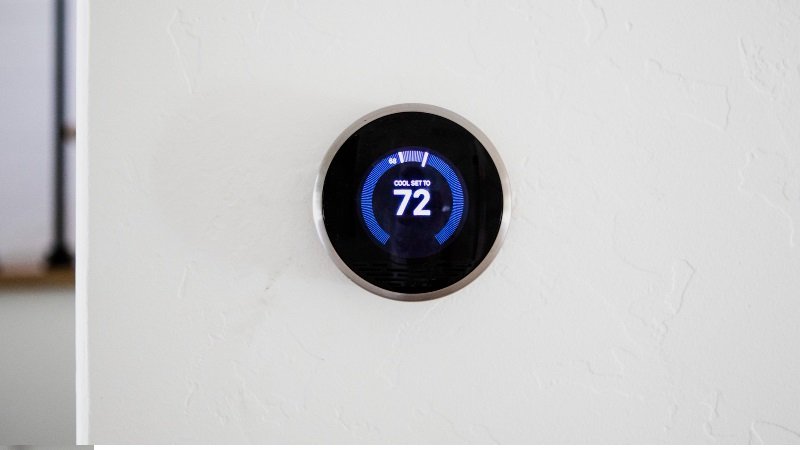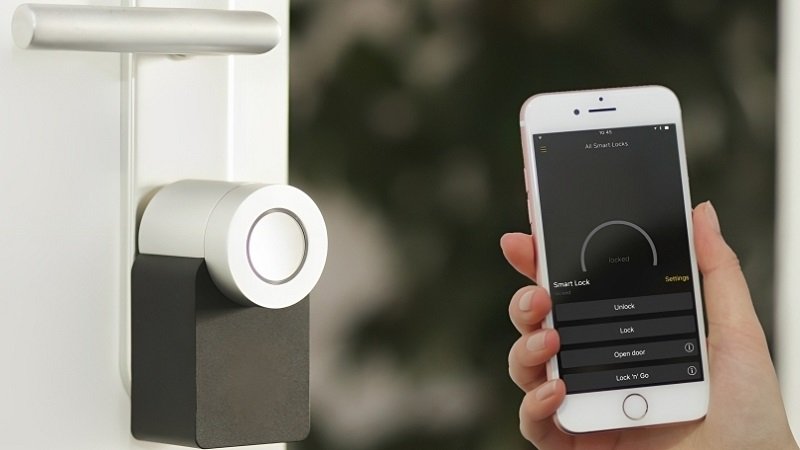How to Choose a Smart Thermostat?
Smart thermostats are becoming more popular because they offer more advantages compared to traditional thermostats. They can help save energy, automate heating and cooling, and make your smart home automation more comfortable.

If you’re planning to purchase a smart thermostat, it’s important to think about a few things. This guide can assist you in choosing the best smart thermostat for your needs.
Compatibility:
Start by ensuring that the smart thermostat you’re considering is compatible with your existing HVAC system. Verify whether it seamlessly integrates with your central heating, furnace, heat pump, or radiant heating system.
Wiring Compatibility:
Evaluate your current thermostat’s wiring and compare it to the requirements of your chosen smart thermostat. Some models may require a C-wire (common wire) for a consistent power supply, while others can function without it or with the addition of a C-wire adapter.
Features and Functionality:
The capabilities of a smart thermostat are game-changers in efficiently managing your home’s temperature and energy consumption. Look for features like programmability, remote control through smartphone apps, geofencing for automatic adjustments based on your location, and learning algorithms that adapt to your preferences.
Energy Efficiency:
A smart thermostat has a significant impact on your energy bills. Seek out models that provide energy usage reports and offer energy-saving features such as “Eco” or “Away” modes. These functionalities empower you to monitor and optimize your energy usage effectively.
Design and User Interface:
An intuitive and user-friendly interface is essential for seamless operation. Choose a smart thermostat with a clear, easy-to-read display that complements your home’s aesthetics.
Installation:
Depending on your technical expertise, you can choose between self-installation and seeking professional assistance. Many manufacturers offer installation services to make the process hassle-free.
Brand Reputation and Support:
Prioritize well-established brands with solid reputations. Opt for smart thermostats from reputable manufacturers that provide reliable products and excellent customer support. Don’t forget to check if the thermostat comes with a warranty for added peace of mind.
Price:
Smart thermostats are available at various price points. Set a budget that aligns with your needs and explore models offering the best features within that range.
Reviews and Recommendations:
Leverage online reviews and recommendations from peers to gain insights from real-world experiences. Learning from others’ journeys can guide you toward a well-informed decision.
Future Compatibility:
Consider your long-term plans for your smart home automation setup. Ensure that your chosen smart thermostat is adaptable to any potential changes or upgrades you might make to your HVAC system.
| Aspect | Key Considerations |
|---|---|
| Compatibility | Ensure compatibility with your HVAC system. |
| Appropriate Features | Choose features that suit your lifestyle and preferences. |
| Energy-Saving Features | Look for adaptive learning and geofencing to save energy. |
| Smart Home Integration | Opt for seamless integration with your existing smart home ecosystem. |
| User-Friendly Interface | Prioritize clear display, intuitive controls, and a well-designed mobile app. |
| Connectivity Options | Ensure stable connectivity, whether Wi-Fi or other communication protocols. |
| Budget Considerations | Set a budget range and explore options that provide long-term energy savings. |
Cost of a Smart Thermostat?
The cost of a smart thermostat can range from around $50 to $300, depending on the features and brand. Here is a breakdown of the average cost of smart thermostats:
- Budget: $50 – $100. These thermostats typically have basic features, such as programmable scheduling and remote access.
- Mid-range: $100 – $200. These thermostats offer more features, such as geofencing, voice control, and energy monitoring.
- Premium: $200 – $300. These thermostats have the most features, such as remote sensors, Amazon Alexa and Google Assistant compatibility, and facial recognition.
The cost of installing a smart thermostat is also typically around $50 – $100. The exact cost will depend on the complexity of the installation and the type of thermostat you choose.
| Thermostat Category | Average Cost Range | Features | Installation Cost |
|---|---|---|---|
| Budget | $50 – $100 | Programmable, Remote Access | $50 – $100 |
| Mid-range | $100 – $200 | Geofencing, Voice Control, Energy Monitoring | $50 – $100 |
| Premium | $200 – $300 | Remote Sensors, Amazon Alexa & Google Assistant Compatibility, Facial Recognition | $50 – $100 |
Here are some additional tips for choosing a smart thermostat:
- Consider the size of your home. If you have a large home, you’ll need a thermostat that can handle the size of your HVAC system.
- Think about your lifestyle. If you’re often away from home, you’ll want a thermostat that can be controlled remotely.
- Make sure the thermostat is compatible with your Wi-Fi network.
By following these tips, you can choose the right smart thermostat for your needs and save energy, automate your heating and cooling, and make your smart home automation more comfortable.
“Your feedback helps us understand what you’re looking for in a blog post and how we can improve our content. We appreciate your time and effort in taking the time to leave a comment or share our blog post.”
FAQ:
Q1: Is it essential to check compatibility before purchasing a smart thermostat?
A: Yes, checking compatibility with your HVAC system is crucial to ensure the smart thermostat will work seamlessly with your heating and cooling setup.
Q2: Can a smart thermostat really help me save energy and reduce utility bills?
A: Absolutely! Smart thermostats offer energy-saving features like adaptive learning and geofencing, optimizing temperature settings based on your behavior and occupancy patterns, resulting in significant energy savings.
Q3: What should I consider if I already have a smart home automation setup?
A: If you have a smart home ecosystem, prioritize choosing a smart thermostat that seamlessly integrates with your existing setup and supports voice assistants like Amazon Alexa or Google Assistant for convenient voice control.
“If you enjoyed this post, you might also like”
The future of smart home automation
The benefits of smart home automation for energy efficiency!
The Evolution of Smart Home Automation: Tracing the history of smart home Technology
The Pros and Cons of Smart Home Automation: Is It Right for You?

